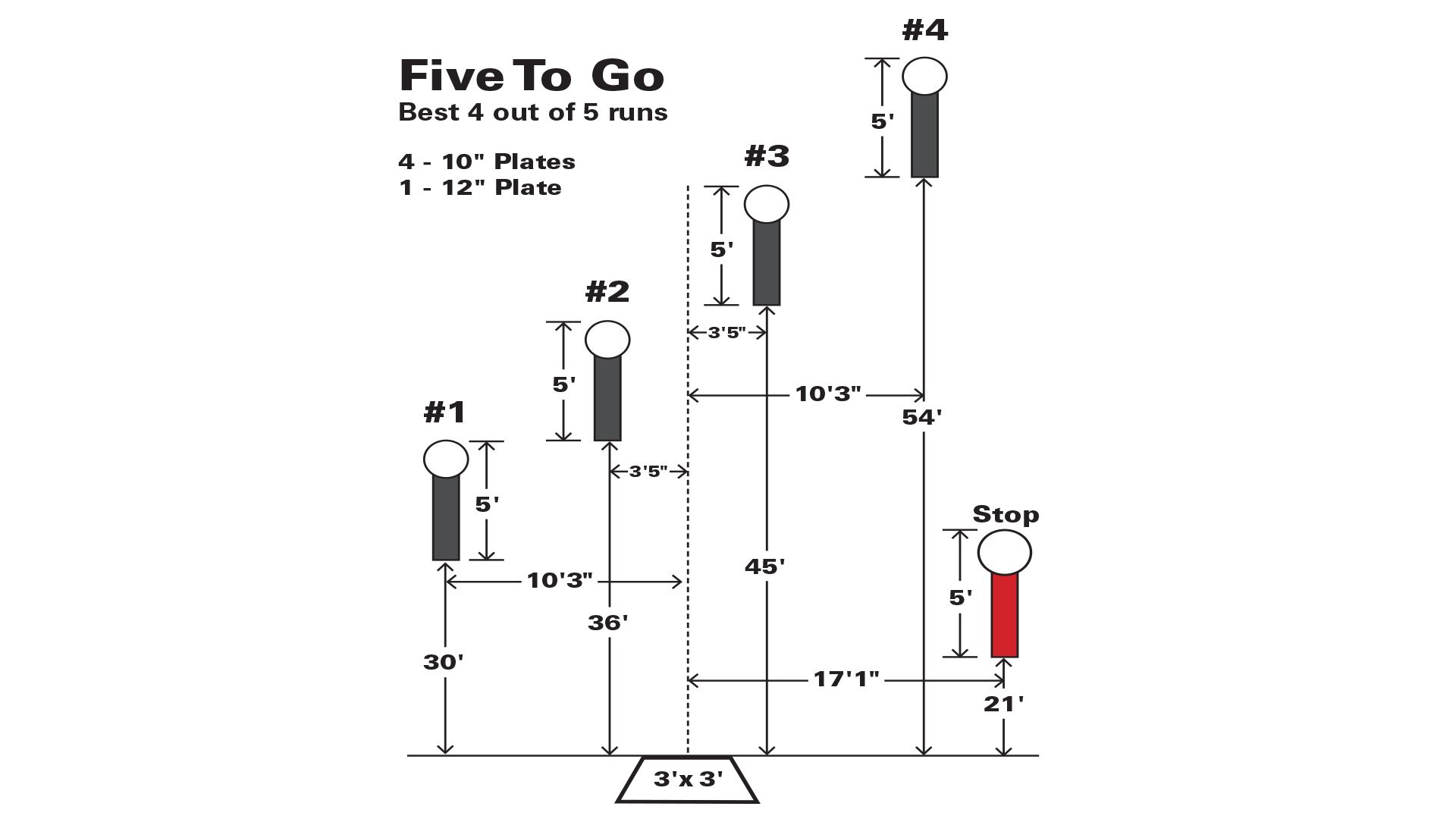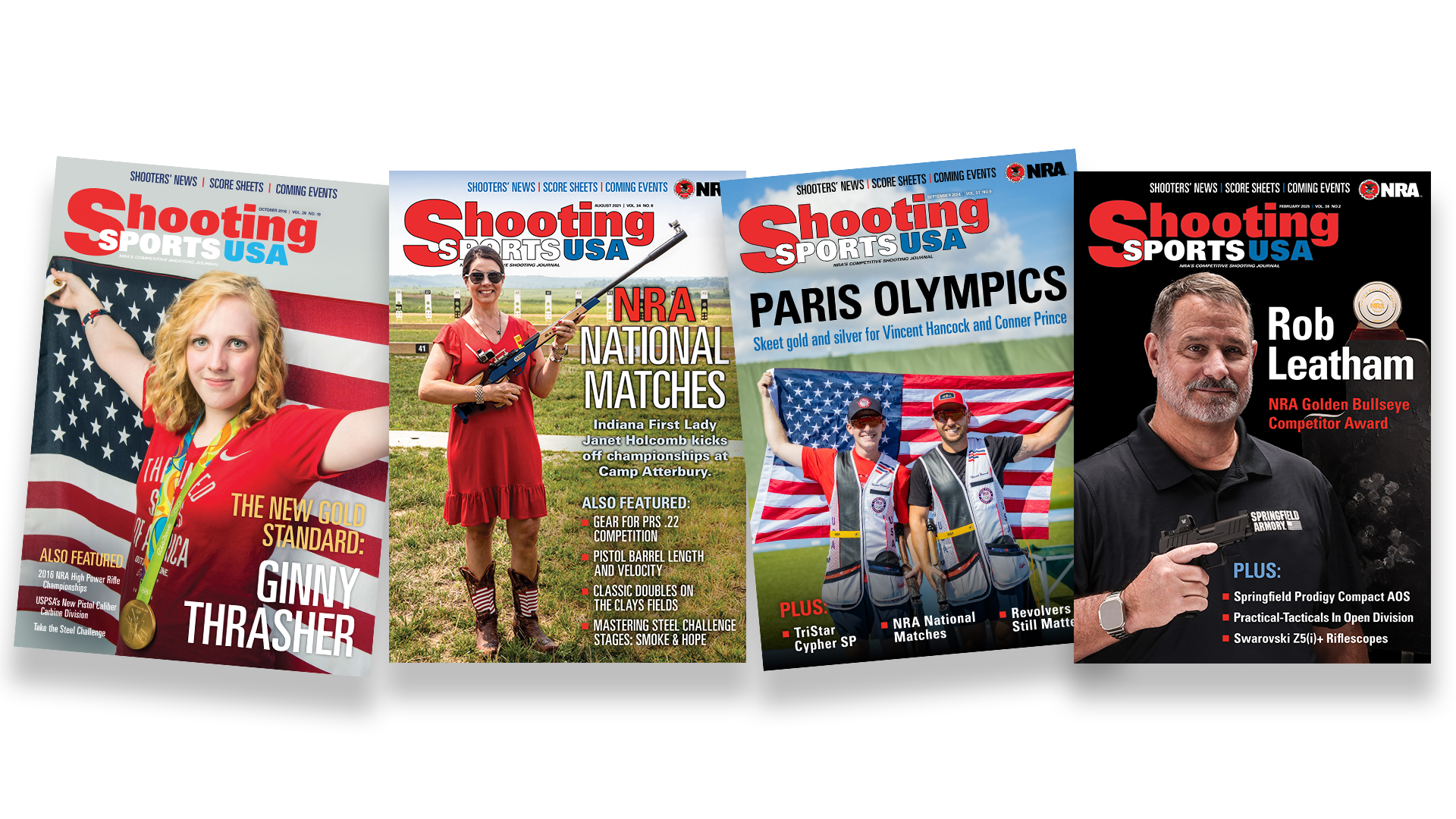
Steel Challenge is one of the fastest growing action shooting sports, and it’s not hard to see why. The game is open to anyone at nearly any age or equipment level. Shooters with an inexpensive, iron-sighted .22 LR rifle or handgun can shoot alongside those holstering $3,000-plus Open division pistols.
Divisions exist for any rimfire handgun (pistol or revolver) with either iron or optical sights. The same holds true for rimfire rifles and pistol-caliber carbines (PCC). These guns will start at the Low Ready position pointing to a cone or sign 10 feet down range. Centerfire handgun divisions consist of the standard USPSA divisions of Open, Limited, Carry Optics and Production, along with revolvers equipped with either iron (ISR) or optical (OSR) sights. These competitors begin their string with a holstered gun and the hands held with the wrists above the shoulders (commonly called the Surrender Position). There is no Power Factor in Steel Challenge—centerfire shooters can use any load that gets the bullet out of the barrel and makes it to the target.

There are eight different stages in Steel Challenge that always remain the same regarding target size, distance and spacing. The targets are white metal plates that may be round plates of 10 or 12 inches, or 18x24-inch rectangles. They’re not falling plates. Scoring a hit requires nothing more than a bullet strike mark anywhere on the plate—even the edge. Each stage consists of five plates. Four are Option plates that may be shot in any order, while the fifth is the Stop plate that ends that string.
Each string is scored by a timer and recorded to 0.01 seconds. Seven stages require five individual strings with the best four scored, while Outer Limits shoots four and scores three. A missed Option plate is a 3-second penalty added to the score, while missing the Stop plate adds 30 seconds. Any number of rounds may be fired to complete the string, and reloading is allowed.
Classification levels exist for each division. They are based upon peak times (which vary by division and stage) and reflect the total winning times per stage achieved at previous national championships. Grand Master requires 95 percent of combined peak times for their division, while Master is 85 percent, A Class 75 percent, B Class 60 percent, C Class 40 percent and D Class under 40 percent.
Hitting five steel plates while standing in a shooting box sounds simple, and given enough time, it is. But it gets a bit tougher when those 0.01 seconds on your score are ticking away.
The ability to transition rapidly between widely spaced targets is obviously important. So, too, is the foot position a shooter chooses when they step into the shooting box. The shooter’s feet have to be set somewhere, and this is where the Natural Point-of-Aim (NPA) comes into play.
NPA is the stance and foot position that places a shooter in perfect body alignment on a single target. It’s easy to find. Place a small target on a wall and back away 20 feet or so. With an empty firearm, take your stance and aim the gun at the target. Next, while holding the gun on the target, close your eyes for three seconds. Open your eyes and see where the sights are on the target. If they are still on target, you nailed it. If not, your foot position needs to be shifted.
If the sights have drifted left, right-handed shooters will find that moving the right foot back or the left foot forward will get them on target. Drifting to the right is corrected by moving the right foot forward or the left foot back. This often works for southpaws as well. The NPA only addresses one target of the five but can make a big difference in the score.
In this series of articles, we’ll break down each of the eight Steel Challenge stages to show how shooters can address them to achieve their best score.

We’ll start with Five To Go (SC-101). This isn’t the fastest stage, but it’s the simplest because there is only one practical way to shoot it—straight left to right.
The most difficult target is No. 4, and this is where most experienced shooters set their NPA. After that, it’s a matter of getting on target No. 1 and transitioning smoothly through the rest. One mistake many newer shooters make is to make the swing to the Stop plate, trigger a round and lower the gun. That’s fine if they hit it, and that 12-inch plate at 7 yards looks big. But if it is missed, it takes precious 0.01 seconds to get the gun back onto the plate. Shooters should never lower their guns after engaging any Stop plate until they have confirmed a hit.
The fastest Peak Time for Five To Go is 9.00 seconds with RFPO (an average of 2.25 seconds for each of the four scored runs). The slowest is ISR at 13.50 seconds for a 3.375 average. That’s fast. But it only requires shooting and not a lot of thinking.
That changes when our series breaks down the other seven stages.
Read more: Steel Challenge: Everlasting Race Of Speed



































